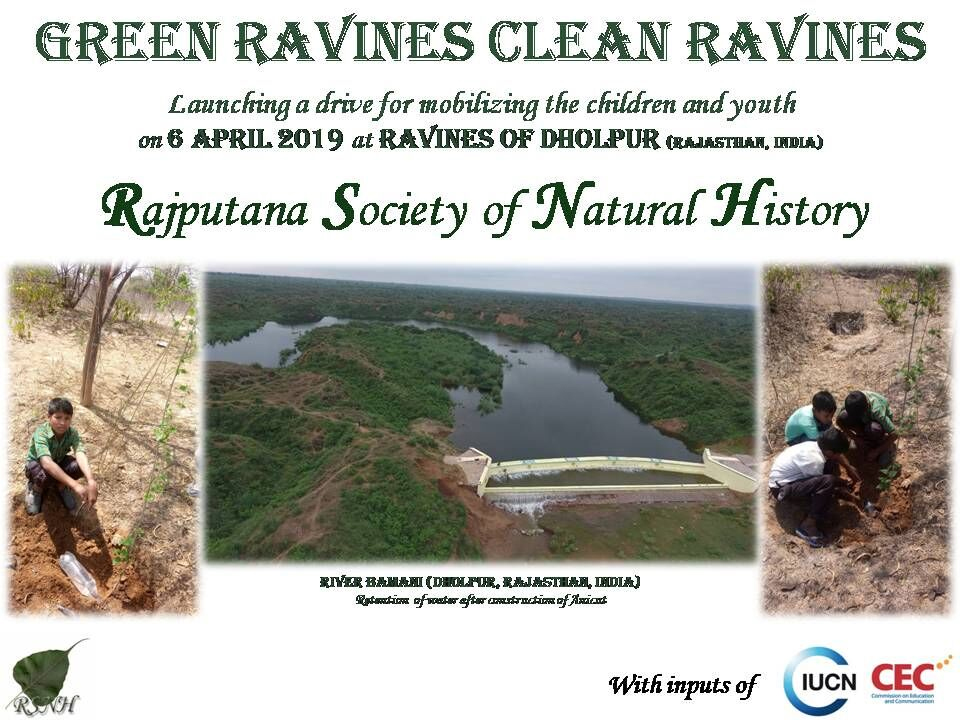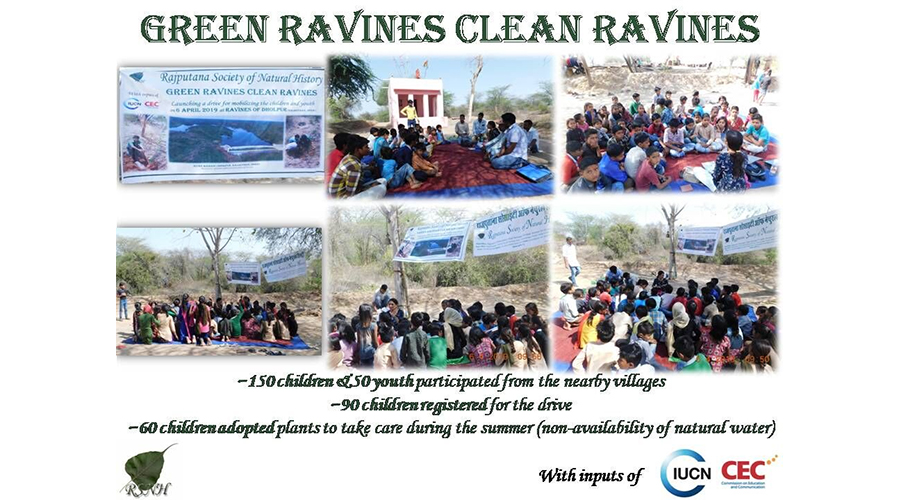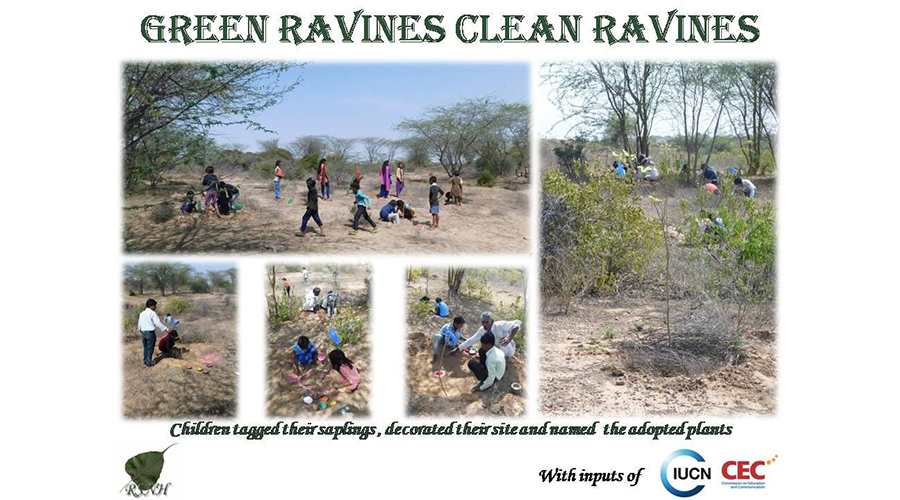New Chapter of Ravine Ecology: Campaign Green Ravine, Clean Ravine launched
The campaign of Green Ravine, Clean Ravine is a series of events which will mainstream the children and youth towards sustainable actions as per the SDGs set up by global community.
|
Ravines have been least overlooked ecosystem by most of the conservationists on the globe. The Ravines of Chambal have already known by most of the governance in India due to the socially backwardness and dacoits. The area further came into highlight when the Supreme Court of India banned the sand mining which affected a lot of people from the community residing nearby River Chambal. A drive to uplift the community residing in the ravines area of Dholpur (Rajasthan, India) has been undertaken by Rajputana Society of Natural History (RSNH). The actions of campaign would be an initiative to revive conservation practices and develop sustainable livelihood. RSNH has developed the site-specific Social Models having the global application. Based on the principle, “Conservation Practices for Sustainable Livelihood”. This approach had linked the conservation actions of the community with the income generation of the local population. The Abu Model had linked conservation of habitats and the globally threatened species Green Avadavat (Amandava formosa) with the local people through the Nature Guiding & Birding. Similarly, the Chak Ramnagar or Bharatpur Model had linked the conservation of local floral species with the economic empowerment of the women from the community residing around the World Heritage & Ramsar Site – Keoladeo National Park (Bharatpur, Rajasthan, India). Both the models had been successfully executed through a series of upliftment programs and events with the local community. The Chambal Model is yet another drive to conserve and preserve the Ravines which are generally overlooked in the governance policy. The Ravine Ecology is one of the most neglected aspects in the Ecological Studies. The challenges of the ravines are well known to most of the Indian community due to their linkage with the Dacoits of Chambal. On the line of SDGs, RSNH has undertaken the commitment to mainstream the communities residing within the ravine areas. In the very first step, the team explored the local natural heritage of the Dholpur (Rajasthan, India). Identified the challenges and need of the local people. The global conservation concern of climate change, water scarcity and biodiversity loss were taken at the very first level of intervention. The sites of the revival of the dried river channels/ tributaries were identified. The structural (civil) activities were carried out at the very first step to retain the soil water moisture conditions in the identified sites. The skills and mindset of the local community was assessed. The community was mobilized by the social interventions through small steps such as conservation agricultural practices, plant nursery raising, animal husbandry, milk products etc. The villages residing nearby the natural water streams and channels were focused at the first level. The structural works were undertaken from April to June 2018 whereas social activities continued with the community since 2016. In the stepwise interventions, the River Bamani which is tributary of River Chambal via River Parbati had been revived with the constructions of the anicuts without affecting the downstream flow. The retention period of water has been enhanced by three to five folds. Before interventions, the stream could be seen flooded only in monsoon period that too for a day or two during rains. Post-interventions, the surface water could be seen till April in the very first year. The prolonged soil water moisture has given the life to the floral cover. Around twenty villages residing nearby streams are the beneficiaries of the interventions. The community is being mobilized by through the future generation, i.e., children and youth. The plantation of the local flora over the four hectare land has been targeted to green the ravines which area naked. On 6 April 2019, a drive of adopting plant sapling by the children has been launched with the inputs of IUCN CEC in the ravines of Dholpur. Every weekend the activities with the children and youth will continue in the open environs of the Ravines. This event is important tool for the policy makers and the conservation community to get involved in the stepwise mobilization of the community to cope up with the modern environmental challenges giving due respect to the local conservation practices. This article could be a tool for the practitioners of the global community to develop site-specific Social Models to work towards SDGs. Dr. Satya Prakash Mehra, Advisor (Scientific & Legal), Rajputana Society of Natural History, |







